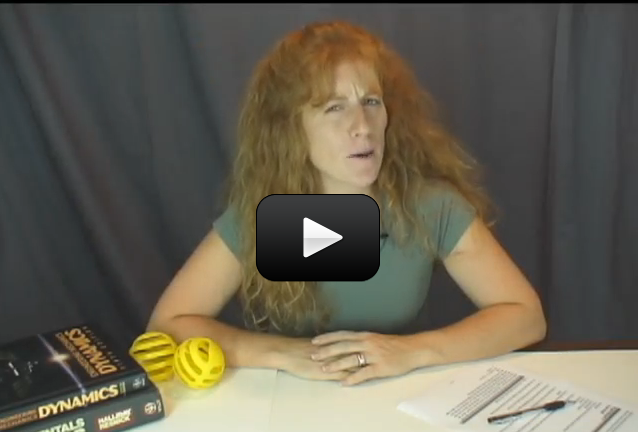You have just taken in a nice bunch of information about the wild world of gravity. This next section is for advanced students, who want to go even deeper. There’s a lot of great stuff here but there’s a lot of math as well. If you’re not a math person, feel free to pass this up. You’ll still have a nice understanding of the concept. However, I’d recommend giving it a try. There are some fun things to do and if you’re not careful, you might just end up enjoying it!
Here’s what you need:
Please login or register to read the rest of this content.


Speed describes how fast something is going. Velocity describes the change in distance over a given amount of time. Acceleration describes a change in speed or velocity.
How is acceleration different from speed and velocity?
Make sure you are logged in so you can see the video!
Why is there no video?
It’s the seconds that are squared. Everything accelerates at 32 feet per second, per second. So it’s velocity is increasing my 32 feet per second, each and every second. It’s because acceleration is the change in velocity per unit time, just like velocity is the change in position per unit time (miles per hour, for example). For acceleration, the units are distance per time per time.
I hope this helps!
Hi Aurora!
I am trying to understand the, “all things accelerate at 32 feet per second squared” part. What is being squared and why?
Thanks!
Hi!
I like to throw frisbees and I was wondering if I could do the same calculations in this experiment to find our how fast the frisbee was going. Would it work?
Thanks
Yes you’re absolutely right. You’ll find more detailed explanations regarding gravity here:https://www.sciencelearningspace2.com/2011/08/common-misconceptions-and-myths-in-science-textbooks-revealed%E2%80%A6-and-how-to-deal-with-them/ We’ll fix the error right away – thanks for your eagle eye!
Hi, Just wanted to point out an error in your essay on weight and gravity. You mentioned that in space you feel “weightless” because there is no gravity. This is, of course, false. There is gravity in space, just as there is everywhere else. Gravity does not end in space, it is there and everywhere. The reason astronauts feel “weightless” is because they are falling becaue gravity pulls on them. Astronauts and space vehices “fall” around the earth – gravity pulls them toward the earth and their forward velocity moves them forward. These equalizing forces keeps them in orbit around the earth. When their forward velocity is reduced, gravity starts to win and they return to earth. When the Apollo vehicles went to the moon, they had to overcome earths gravity until the gravity of the moon became the dominant force. Then they moved toward the moon and entered orbit around the moon – again “falling around the moon”. Its a common misconception that there is no gravity in space, when there really is.
Aurora,
Thank you for answering all mine questions it means a lot.
THANKS
seth veenbaas
Hi Seth,
We’re going to be working with the difference between vertical and horizontal velocity next week… but to answer your question, the gravity field is only in the vertical, so you can tell that those equations are only for vertical velocity. More next week!!
P.S. We love your questions! Keep them coming!!
We’re actually going to cover terminal velocity in the next unit… can you hold on until next week? 🙂
aurora,
sorry for so many questions but will this work if the object is thrown at an arch or in it just for vertical tregectorys.
Seth Veenbaas
Aurora,
Will this formula still work if the object being thrown reaches termenal velocity.
seth veenbaas
thanks